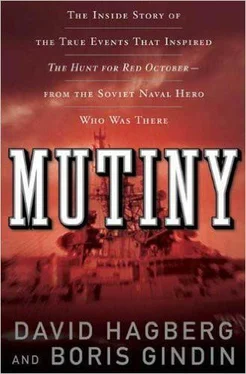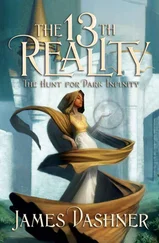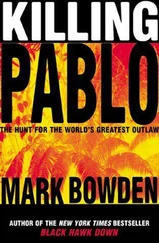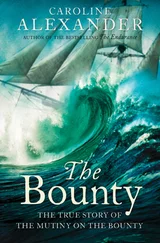It soon became an elite club. If you weren’t a member of the Communist Party you were one of the little people. And little people got nothing!
Actually, it was even more complicated than that, as most things usually are. The revolution began in October 1917, and two months later the Bolsheviks created what was called the Cheka, or secret police, which several years later finally changed its name, if not its method of operations, to the KGB. The Cheka’s first task was to ferret out the counterrevolutionaries and kick them out of the Party or bring them to trial. Less than one year later the secret police was charged with targeting all the old tsarists, plus any party or person opposing the revolution, including the Cossacks, who’d been around a lot longer than the Communists.
The first spymaster, Felix Dzerzhinsky, for whom a square was named in downtown Moscow, called what he was doing the Red Terror:
“We represent in ourselves organized terror. This must be said very clearly. Such terror is now very necessary in the conditions we are living through in a time of revolution.”
Which was a very understandable sentiment at such a difficult time in a new government’s existence. Except that after the revolution was over with and after the civil war had been waged and won, the Cheka and its descendant organizations never changed their tune. From December 1917 until this early evening aboard the Storozhevoy it was operations as usual.
Although technically Russia didn’t become the Union of Soviet Socialist Republics until the end of 1922, when Belarus and Ukraine joined the main body of Lenin’s Moscow government, by then the first serious seeds of discontent were already beginning to be sown, starting with the navy.
More than one year earlier, in March 1921, a group of sailor conscripts in Kronshtadt, the same guys who had initially supported the Bolsheviks, went on strike against the new regime. It took no less than Leon Trotsky to lead a unit of the Red Army across the frozen Baltic to put down the rebellion. The handwriting was on the wall. The people, mostly peasants, were dissatisfied with their government that was supposed to represent them. Lenin, almost always a savvy Bolshevik, instituted a new policy according to which small businesses could be privately owned, and he eased up on the restrictions against some political activities. The average citizen could then criticize the government, on occasion, and farmers could also market their own produce.
Immediately social unrest dropped off and farmers prospered.
Because peasants had more money, they could purchase manufactured goods. Factories increased production; factory workers bought more food. The Soviet Union, for a time, became the largest producer of grain on the planet, outstripping even the United States.
When Lenin died in 1924, Trotsky’s Left Opposition condemned the new economic policies for inflating currency, displacing workers, and enriching the upper classes.
Soviet history then took an almost surreal turn. Trotsky and his supporters wanted to end economic freedoms. Nikolay Bukharin’s faction favored the status quo. Stalin played them all, first supporting Trotsky to get rid of Bukharin. Stalin then helped the Soviet moderates who sought to jettison Trotsky.
By 1927 Stalin was Lenin’s heir apparent, even though Lenin had written that he was “rude, intolerant, and capricious” and should never be given power. Stalin told the Communist Party Congress that the world’s capitalists were encircling them. Soviet industry alone could ensure the Rodina’s survival. They were fifty to one hundred years behind Western Europe and the United States.
Stalin created a new bureaucracy called Gosplan, the State Committee for Planning, which would guide the Soviet Union’s economic development—especially its industrialization.
Stalin’s bloody and brutal five-year plans dragged the Soviet Union into the twentieth century, transforming an agricultural basket case into a military-industrial giant.
Modernization came at an extremely heavy price. During the first five-year plan, miners and factory workers were forced to put in sixteen- to eighteen-hour workdays or face charges of treason. Most estimates put the death toll at more than 130,000 workers in the first years, a number that doesn’t include forced-labor deaths in the gulags. In the twenty-seven years from 1927 to 1954 when Gosplan was in charge, nearly 4 million workers were sent to prisons or gulags for crimes against the revolution. Of those more than a half million were executed and another half million or so were kicked out of the country. That’s not counting the estimated 22 million Russians killed during WWII, or about the same number of peasants killed, their deaths also bringing the Soviet Union into the twentieth century. All in all, nearly 50 million people were killed in the Soviet Union in its first fifty years of existence.
By some accounts those numbers are conservative, some of them by a large factor. But what all historians agree on is that a great many people died.
Under collectivism agricultural production plummeted. Widespread famine and starvation led to cannibalism, which led to a general spiritual malaise. Moscow said things were looking up, and the population tightened its collective belt. Moscow said the new Soviets lived longer and were more prosperous than any other people on earth, and the population carried their dead to the cemeteries with heads held low. Moscow said true happiness and prosperity were just around the corner, and people like Gindin’s family planted gardens and hunted mushrooms in the woods so that they could eke out a bare existence.
It was called doublespeak, a term invented by George Orwell in his novel 1984 but one that most Russins understood at least on a visceral level.
For their whole lives the Soviet system had concealed the truth from its citizens—from people like Gindin and Captain Potulniy. Had it not been for Zampolit Sablin, both men might have lived out their lives ignoring the brutal, remorseless, and relentless lies they had been systematically fed.
After Sablin’s revolt, however, they would never be so naive again When Gindin and his fellow officers contemplated the white and black backgammon pieces that Sablin had placed in front of them, they were looking down the barrel of nearly sixty years of doublespeak, even though they weren’t completely aware of why. But they were afraid. At this point they knew there was no going back for any of them.
15. THE CAPTAIN AND THE ENGINEER
Being on rotation aboard the Storozhevoy or just about any other warship in the Soviet navy means spending six months at sea. Usually in neutral waters such as the Mediterranean or the open Atlantic. But the real problem is that warships from just about every other interested nation are out there, too. French ships, Italian ships, Dutch ships, German ships, and of course U.S. naval vessels, the enemy.
The officers and crew aboard all these warships conduct day-today training just about the whole time they’re out there. It means everyone is usually busy. Sometimes even too busy to really notice what’s going on, because in addition to the training, the biggest job assigned to each warship is to spy on all the other warships. It’s a very important and potentially very deadly game. But for each of these countries’ navies what’s ultimately at stake is the very safety of their own nations.
In 1975 the Soviet Union and United States are lined up against each other for domination of the entire world, against the threat of global thermonuclear war. For the first time in history two nations have, between them, the absolute ability to destroy all life as we know it on the entire planet.
Читать дальше












